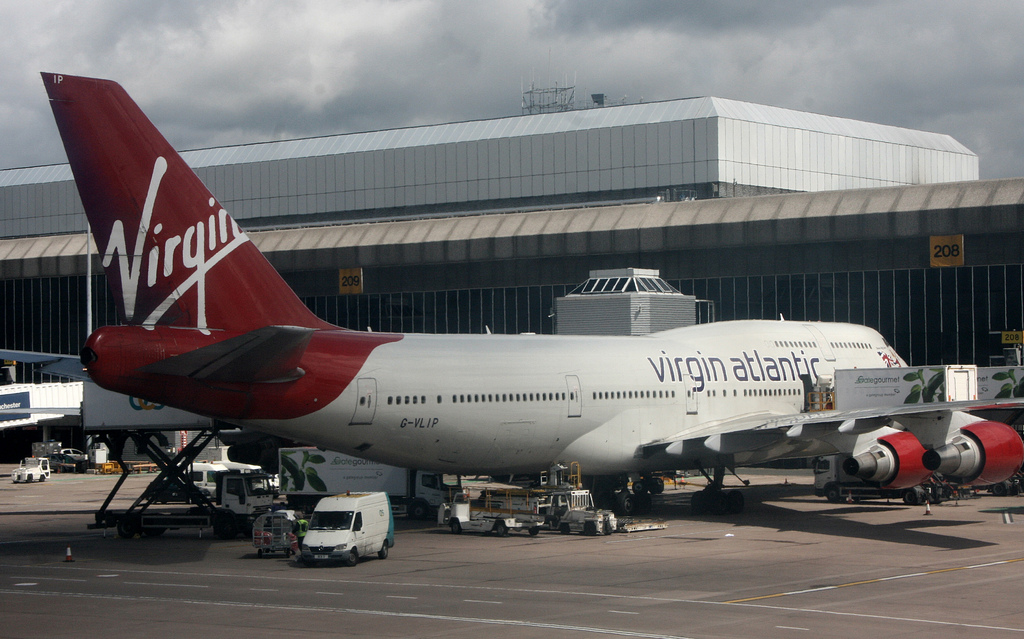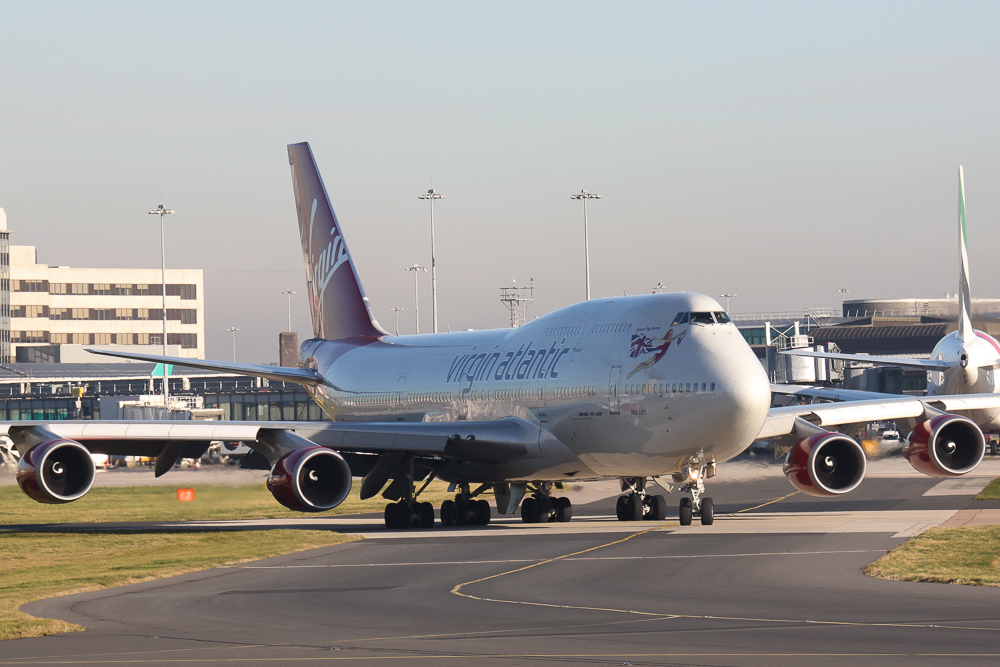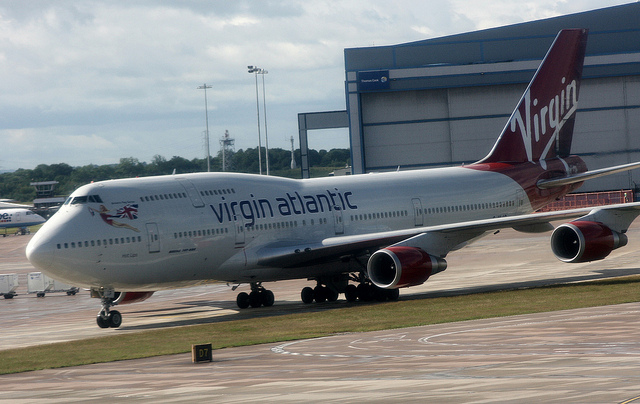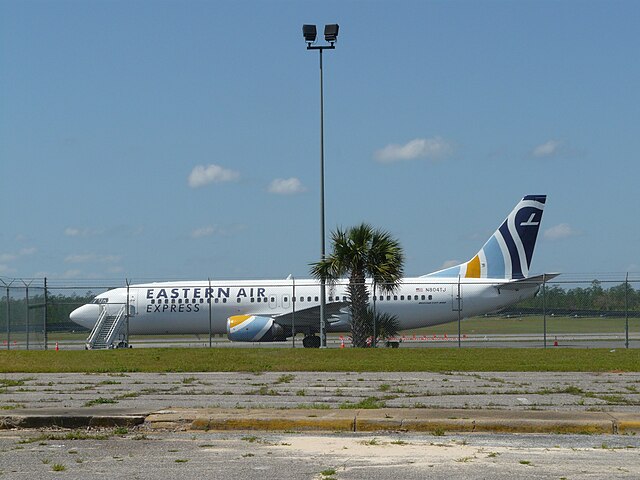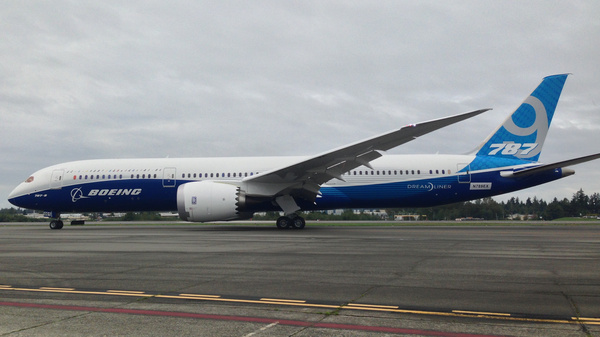Virgin Atlantic B744 over Atlantic on Nov 14th 2013, turbulence injures 4
Last Update: September 11, 2014 / 14:09:10 GMT/Zulu time
Incident Facts
Date of incident
Nov 14, 2013
Classification
Accident
Cause
Turbulence
Airline
Virgin Atlantic
Flight number
VS-66
Departure
Montego Bay, Jamaica
Destination
London Gatwick, United Kingdom
Aircraft Registration
G-VLIP
Aircraft Type
Boeing 747-400
ICAO Type Designator
B744
The FAA reported that one member of the flight crew and 3 passengers, but no cabin crew, were injured in the turbulence encounter.
On Sep 11th 2014 the British AAIB released their bulletin reporting the captain's (43, ATPL, 11,072 hours total, 7,853 hours on type) weather radar was tilted one degree down, the first officer's weather radar 2 degrees down. The radar screens painted light to moderate weather returns indicating a line of weather across the aircraft's track. The flight crew requested a deviation to the left, which was not approved, however a deviation to the right was approved. The AAIB stated: "The wind at this stage was from astern, so the crew were not concerned that their new track would be downwind of the observed weather and thus possibly subject to turbulence. As the aircraft flew abeam the line of weather, returns on the radar reduced and disappeared altogether."
The aircraft was still flying in smooth air and was instructed to descend to FL360 when "the aircraft started to encounter turbulence and the flight crew switched the cabin seat belt signs on. The commander recalled seeing a flash outside, which he thought may have been lightning associated with a thunderstorm cell beneath the aircraft. Suddenly, the turbulence increased markedly and became severe for a while. The flight crew felt that the aircraft climbed suddenly, and there was a brief activation of the stick shaker, although attitude remained normal and the autopilot and autothrottle remained engaged (the latter requiring some manual inputs to avoid exaggerated throttle position changes). Engine ignition systems were turned on as a precaution."
The captain, following the earlier ATC instruction, commenced a slow descent to FL360, the "aircraft attitude remained within normal values, although the vertical speed showed significant momentary climbs and descents."
The crew was subsequently informed a number of passengers and a cabin crew had received injuries, the most severe being a laceration injury to a passenger's knee. After consultation with medical advisors the crew decided to continue to Gatwick, where two passengers and the flight attendant were taken to a hospital.
Flight attendants reported that they were flying in smooth air, meal service had just been finished, most passengers were seated, when a light rumble occurred and the fasten seat belt signs illuminated. The flight attendant in the forward rather small cabin was able to complete checks of passenger seat belts, while taking her seat the turbulence increased in severity, she had difficulty to close her harness when a large jolt occurred. Another flight attendant further aft made a passenger announcement and spotting that the turbulence increased in severity added that all flight attendants should take their seats. As she sat down a substantial jolt occurred. The AAIB summarized: "The cabin crew reported that, because of the recent cabin service and the stage of flight, most passengers were already seated with their seat belts fastened. All the passengers who suffered injury were in the rear right side of the aircraft. The cabin crew member who suffered a head/neck injury was on a horizontal bunk in the crew rest area, which was also at the rear right."
According to the flight data recorder the flight had been smooth at FL370 when light turbulence set in. 9 minutes later a marked increase in turbulence occurred, the aircraft began to descend almost at the same time. About two minutes after the start of descent a peak acceleration occurred involving values of -0.7G and +1.7G. The aircraft subsequently levelled at FL360 and continued at FL360 for about 5 minutes flying in moderate turbulence, then climbed back to FL370 where turbulence significantly decreased, light turbulence was felt for another 15 minutes before turbulence subsided.
Incident Facts
Date of incident
Nov 14, 2013
Classification
Accident
Cause
Turbulence
Airline
Virgin Atlantic
Flight number
VS-66
Departure
Montego Bay, Jamaica
Destination
London Gatwick, United Kingdom
Aircraft Registration
G-VLIP
Aircraft Type
Boeing 747-400
ICAO Type Designator
B744
This article is published under license from Avherald.com. © of text by Avherald.com.
Article source
You can read 1 more free article without a subscription.
Subscribe now and continue reading without any limits!
Read unlimited articles and receive our daily update briefing. Gain better insights into what is happening in commercial aviation safety.
Send tip
Support AeroInside by sending a small tip amount.
Related articles
Virgin Atlantic B744 at London on Mar 22nd 2017, lightning strike
A Virgin Atlantic Boeing 747-400, registration G-VLIP performing flight VS-65 from London Gatwick,EN (UK) to Montego Bay (Jamaica), was climbing out…
Virgin Atlantic B789 near Goose Bay on Jul 7th 2025, temporary loss of cabin pressure
A Virgin Atlantic Boeing 787-9, registration G-VSPY performing flight VS-156 (dep Jul 6th) from Las Vegas,NV (USA) to London Heathrow,EN (UK). was…
Virgin Atlantic A35K over Atlantic on Mar 6th 2025, hydraulic failure
A Virgin Atlantic Airbus A350-1000, registration G-VPOP performing flight VS-3 from London Heathrow,EN (UK) to New York JFK,NY (USA), was enroute at…
Virgin Atlantic A339 over Atlantic on Dec 17th 2024, multiple system failures
A Virgin Atlantic Airbus A330-900, registration G-VLDY performing flight VS-118 (dep Dec 16th) from Miami,FL (USA) to London Heathrow,EN (UK), was…
Virgin Atlantic A35K at Edinburgh on May 29th 2024, nose tyre damaged on departure
A Virgin Atlantic Airbus A350-1000, registration G-VNVR performing flight VS-226 (dep May 28th) from Orlando,FL (USA) to Edinburgh,SC (UK), departed…
Virgin Atlantic B789 over Atlantic on May 27th 2024, cracked windshield
A Virgin Atlantic Boeing 787-9, registration G-VCRU performing flight VS-41 from London Heathrow,EN (UK) to San Francisco,CA (USA), was enroute at…
Newest articles
Eastern Express B734 at Ft. Myers on Oct 18th 2025, runway excursion
An Eastern Air Express Boeing 737-400, registration N804TJ performing flight BBQ-2150 from Havana (Cuba) to Ft. Myers,FL (USA), was on approach to…
Indigo B789 at Amsterdam on Nov 26th 2026, technical issue with landing gear
An Indigo Boeing 787-9, registration LN-LNR performing flight 6E-22 from Amsterdam (Netherlands) to Mumbai (India), was climbing out of Amsterdam's…
Subscribe today
Are you researching aviation incidents? Get access to AeroInside Insights, unlimited read access and receive the daily newsletter.
Pick your plan and subscribePartner

ELITE Simulation Solutions is a leading global provider of Flight Simulation Training Devices, IFR training software as well as flight controls and related services. Find out more.
SafetyScan Pro provides streamlined access to thousands of aviation accident reports. Tailored for your safety management efforts. Book your demo today
AeroInside Blog
Popular aircraft
Airbus A320Boeing 737-800
Boeing 737-800 MAX
Popular airlines
American AirlinesUnited
Delta
Air Canada
Lufthansa
British Airways

